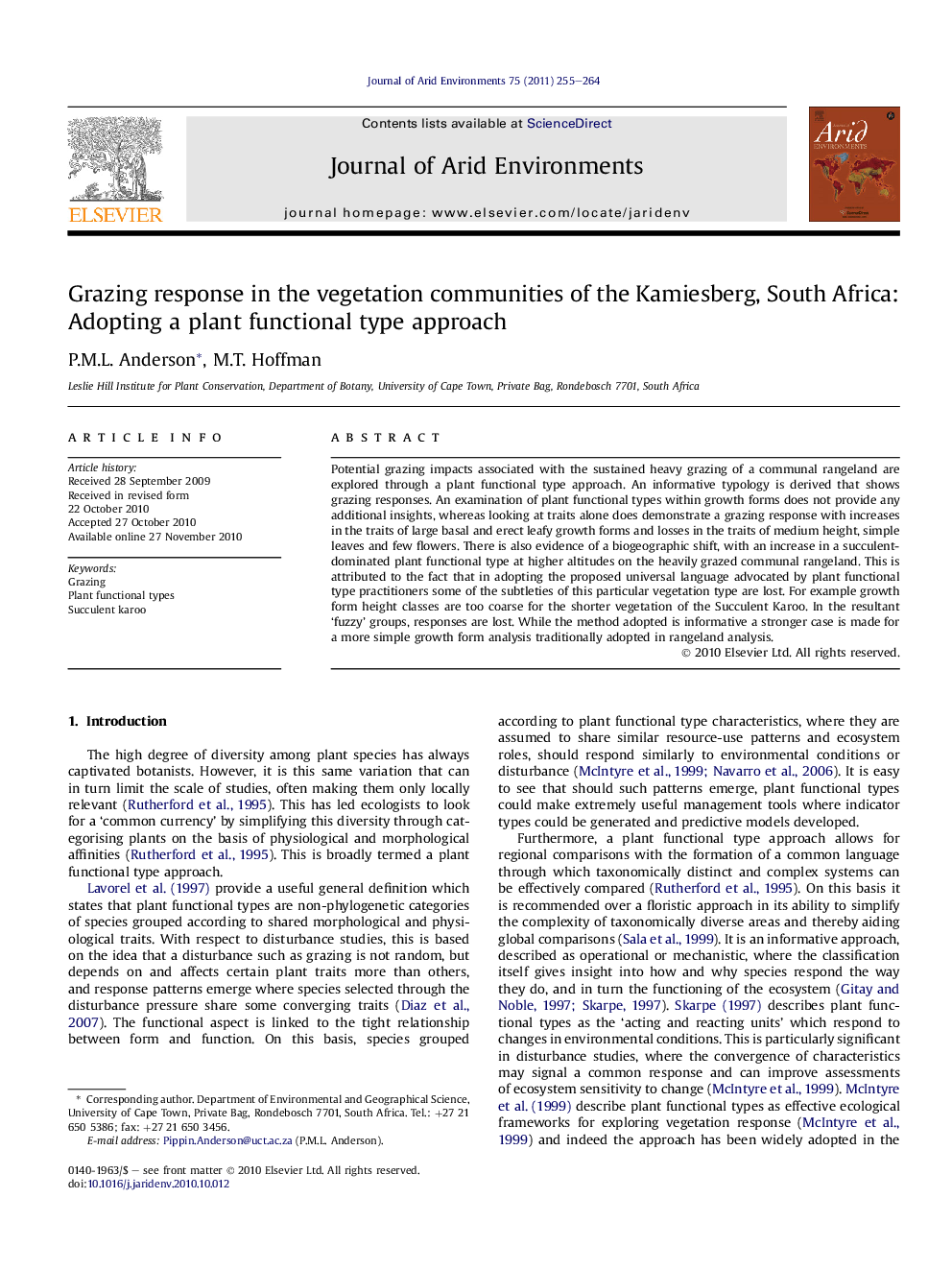| Article ID | Journal | Published Year | Pages | File Type |
|---|---|---|---|---|
| 4393856 | Journal of Arid Environments | 2011 | 10 Pages |
Potential grazing impacts associated with the sustained heavy grazing of a communal rangeland are explored through a plant functional type approach. An informative typology is derived that shows grazing responses. An examination of plant functional types within growth forms does not provide any additional insights, whereas looking at traits alone does demonstrate a grazing response with increases in the traits of large basal and erect leafy growth forms and losses in the traits of medium height, simple leaves and few flowers. There is also evidence of a biogeographic shift, with an increase in a succulent-dominated plant functional type at higher altitudes on the heavily grazed communal rangeland. This is attributed to the fact that in adopting the proposed universal language advocated by plant functional type practitioners some of the subtleties of this particular vegetation type are lost. For example growth form height classes are too coarse for the shorter vegetation of the Succulent Karoo. In the resultant ‘fuzzy’ groups, responses are lost. While the method adopted is informative a stronger case is made for a more simple growth form analysis traditionally adopted in rangeland analysis.
Research highlights► Plant functional traits demonstrate a grazing response with increases in the traits of large basal and erect leafy growth forms and losses in the traits of medium height, simple leaves and few flowers in a semi-arid rangeland. ► Heavy grazing gives rise to a biogeographic shift, with an increase in a succulent-dominated plant functional type at higher altitudes on the heavily grazed communal rangeland. ► Findings suggest the proposed universal language advocated by plant functional type practitioners means that some of the subtleties of some vegetation types are lost.
